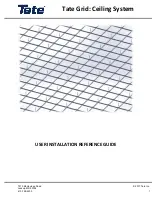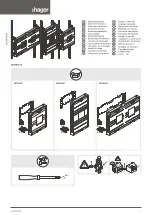
28
Safety Valve
- An automatic pressure relieving device actuated by the
static pressure upstream of the valve, and characterized by rapid full
opening or pop action. It is used for steam, gas, or vapor service.
Relief Valve
- An automatic pressure relieving device actuated by the
static pressure upstream of the valve which opens in proportion to the
increase in pressure over the opening pressure. It is used primarily for
liquid service.
Safety Relief Valve
- An automatic pressure actuated relieving device
Suitable for use as either a safety or relief valve, depending on application.
Pressure Relief Valve
- A pressure relief valve is a pressure relief device
which is designed to reclose and prevent the further flow of fluid after
normal conditions have been restored.
Set Pressure
- Set pressure, in pounds per square inch gauge, is the inlet
pressure at which the pressure relief valve is adjusted to open under
service conditions. In a pressure or safety relief valve in gas, vapor, or
steam service, the set pressure is the inlet pressure at which the valve
starts to discharge under service conditions.
Differential Set Pressure
- The pressure differential in pounds per square
inch between the set pressure and the constant superimposed back
pressure. It is applicable only when a conventional type safety relief valve
is being used in service against constant superimposed back pressure.
Cold Differential Test Pressure
- Cold differential test pressure, in
pounds per square inch gauge, is the inlet static pressure at which the
pressure relief valve is adjusted to open on the test stand. This pressure
includes the corrections for service conditions of back pressure or
temperature, or both.
Operating Pressure
- The operating pressure of a vessel is the pressure,
in pounds per square inch gauge, to which the vessel is usually subjected
in service. A vessel is usually designed for a maximum allowable working
pressure, in pounds per square inch gauge, which will provide a suitable
margin above the operating pressure in order to prevent any undesirable
operation of the relief device. (It is suggested that this margin be as great
as possible consistent with economical vessel and other equipment
design, system operation and the performance characteristics of the
pressure relieving device.)
Appendix A: Valve Terminology
Maximum Allowable Working Pressure
- Maximum allowable working
pressure is the maximum gauge pressure permissible at the top of a
completed vessel in its operating position for a designated temperature.
This pressure is based on calculations for each element in a vessel using
nominal thicknesses, exclusive of allowances for corrosion and thickness
required for loadings other than pressure. It is the basis for the pressure
setting of the pressure-relieving devices protecting the vessel. The design
pressure may be used in place of the maximum allowable working
pressure in cases where calculations are not made to determine the value
of the latter.
Overpressure
- Overpressure is a pressure increase over the set pressure of
a pressure relief valve, usually expressed as a percentage of set pressure.
Accumulation
- Accumulation is the pressure increase over the maximum
allowable working pressure of the vessel during discharge through the
pressure relief valve, expressed as a percent of that pressure or in pounds
per square inch.
Blowdown
- Blowdown is the difference between actual popping pressure
of a pressure relief valve and actual reseating pressure expressed as a
percentage of set pressure or in pressure units.
Lift
- Lift is the actual travel of the disk away from closed position when a
valve is relieving.
Back Pressure
- Back pressure is the static pressure existing at the outlet
of a pressure relief device due to pressure in the discharge system.
Superimposed Back Pressure
- Superimposed back pressure is the
static pressure existing at the outlet of a pressure relief device at the time
the device is required to operate. It is the result of pressure in the
discharge system from other sources when the valve is closed. Superim-
posed back pressure can be constant, variable or both:
Constant Superimposed Back Pressure
- Back pressure which does
not change appreciably under any condition of operation whether the
pressure relief valve is closed or open.
Variable Superimposed Back Pressure
- The pressure existing at the
outlet of a pressure relief device, which does not remain constant
when the pressure relief valve is closed.
Built-Up Back Pressure
- Built-up back pressure is pressure existing at
the outlet of a pressure relief device occasioned by the flow through that
particular device into a discharging system.
Содержание 2600 Series
Страница 1: ...0713T R0 Series 2600 Maintenance Manual ...
Страница 47: ...47 Notes ...
















































